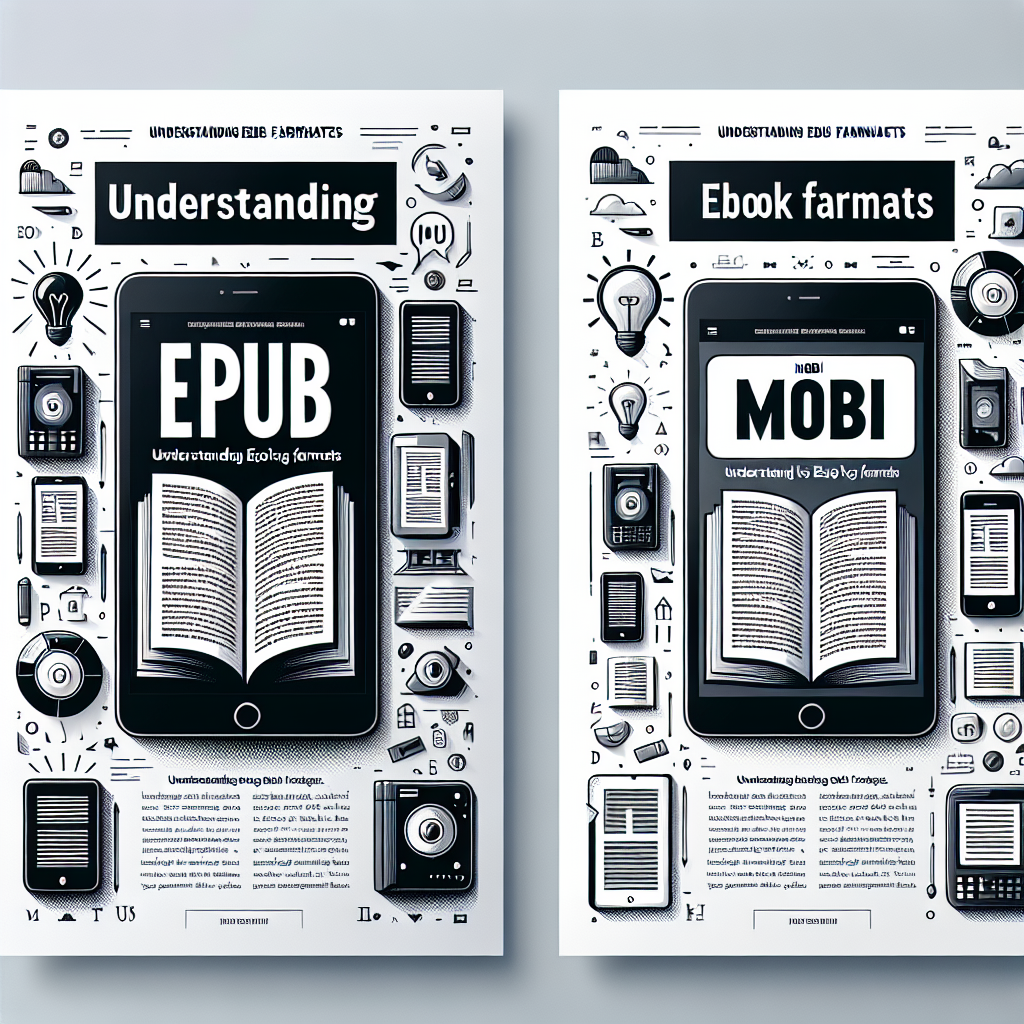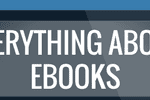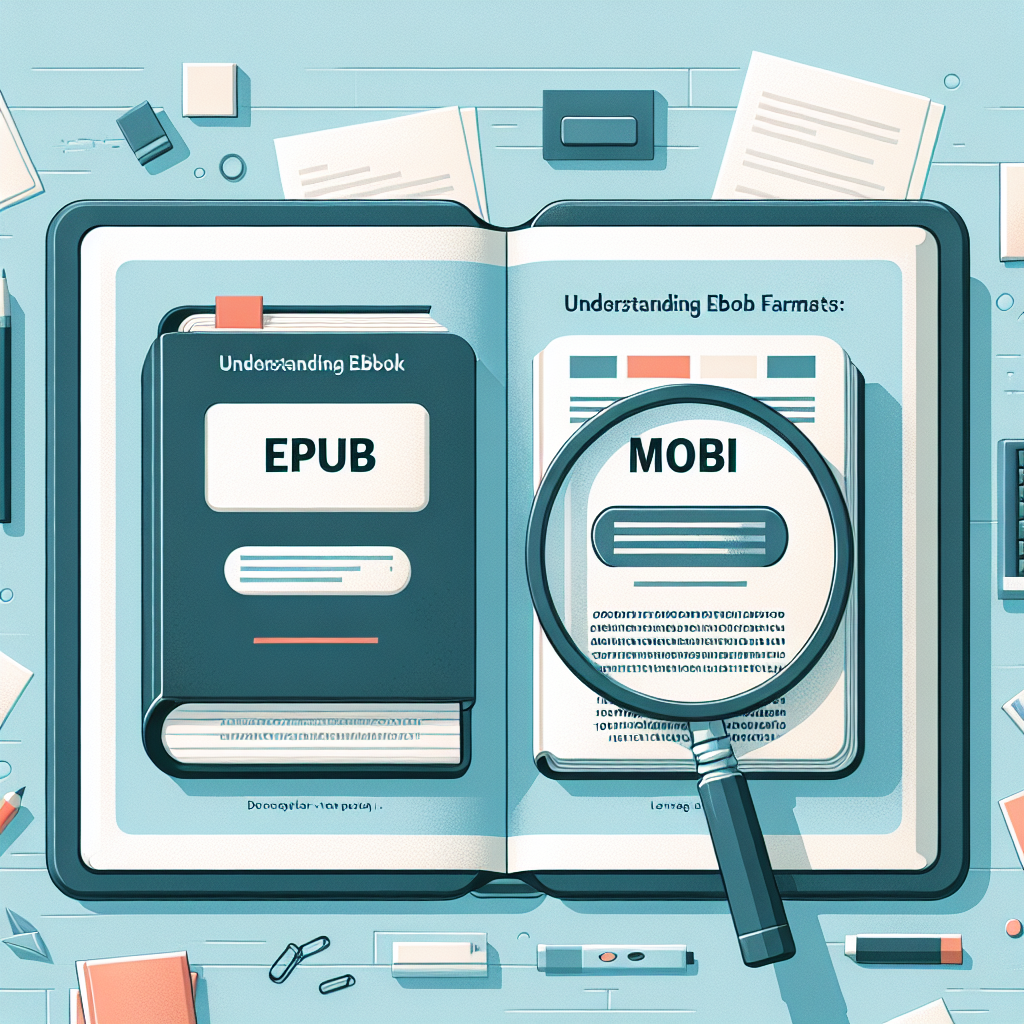
I will kick things off by exploring the nuts and bolts of ebook formats. Now, if you’re an avid reader or a budding author, understanding these formats isn’t just a techie detail —it’s crucial to optimise your reading or publishing experience.
So what’s all the fuss about picking the right ebook format? Well, it’s all about accessibility, readability, and convenience. With the array of devices available —from smartphones to dedicated e-readers—choosing a compatible format ensures that your book is as mobile as you are.
While there are several ebook formats out there, EPUB and MOBI have taken centre stage. These two formats rule the digital bookshelves, but they’re quite different, and that’s what you’re going to find out about.
The surge of digital reading has transformed how we consume literature. Gone are the days of lugging around hefty tomes—ebooks have ushered in an era of literary instant gratification. And this revolution isn’t just about convenience; it’s also about breaking new ground in publishing technology and expanding access to information.
Diving into EPUB: Features and Compatibility
EPUB, which stands for Electronic Publication, is a widely adopted ebook format. It’s an open standard, which means it’s free for anyone to use, and it’s managed by the International Digital Publishing Forum (IDPF). This freedom and universal support make EPUB a go-to choice for a majority of publishers and reading devices.
The primary draw of the EPUB format is its reflowable text. Unlike PDFs, which maintain a static page layout, the content in an EPUB file can adapt to fit the size of the screen it’s displayed on. This makes it incredibly user-friendly, allowing for a more enjoyable reading experience on smartphones, tablets, and ereaders.
Beyond its flexibility, EPUB files can include multimedia elements like audio, video, and interactive widgets, making them not just for reading but for experiencing media. Think of EPUBs as the Swiss Army knife of ebooks: versatile and functional across many platforms.
Another standout feature of EPUB is accessibility. It can support features that are crucial for users with disabilities, such as alternative text for images and support for screen readers. This commitment to inclusivity ensures that ebooks are available to a broader audience.
When it comes to compatibility, EPUB files are king. They’re supported on a wide array of devices, from dedicated ereaders like the Nook to versatile tablets running iOS or Android. Virtually any app made for reading ebooks will handle EPUB files with ease. Plus, many public libraries use EPUB for lending books digitally.
But it’s not all smooth sailing. EPUB’s Achilles’ heel used to be digital rights management (DRM), which can be implemented by publishers to prevent unauthorised distribution. DRM can make sharing EPUB files more difficult and, at times, limit what devices can open them.
Now, with a clear understanding of the EPUB format, you’re going to find out why Amazon’s proprietary MOBI format presents a different angle in the digital reading world.
Understanding MOBI: Amazon’s Ebook Format
Now, let’s talk about MOBI, the ebook format that’s closely associated with Amazon, one of the biggest players in the digital book market. MOBI started out as an independent format before Amazon acquired it and made it integral to their Kindle ecosystem.
One of the most definitive aspects of MOBI is its tie to Amazon’s array of Kindle devices. Authors looking to tap into Amazon’s vast audience primarily use this format. Why is that? Well, because MOBI files are tailored for Amazon’s Kindle, which is arguably one of the most widespread e-readers around.
So, what’s in it for Kindle users? The native support means MOBI files typically work well on Kindle devices, ensuring a seamless reading experience. The format also integrates with Amazon’s Whispernet service, allowing for instant wireless delivery of books to your device.
MOBI has some exclusive features, like advanced content protection and the ability to include complex content. However, its proprietary nature can be limiting for those who wish to read their purchased books on non-Kindle devices. This exclusivity can also restrict authors who prefer a wider distribution of their works.
Looking ahead, MOBI’s fate is somewhat intertwined with Amazon’s market strategies. Although they have introduced a newer format, Kindle Package Format (KPF), for their latest devices, MOBI still exists and maintains compatibility with older devices. This ensures users with older Kindles won’t lose access to their libraries.
So, when comparing MOBI to EPUB, it’s essential to consider the reach and convenience offered by Amazon’s ecosystem, but also weigh the pros and cons regarding device compatibility, especially if you’re planning to access ebooks across various platforms.
Comparing EPUB and MOBI: Which is the Better Format?
You’re going to find out that there isn’t a one-size-fits-all answer to this question. Both EPUB and MOBI formats have their unique sets of strengths, catering to different needs. If you’re an avid reader who switches between devices, EPUB’s flexibility is a winning feature. This format’s compatibility with numerous e-readers, smartphones, and desktop applications means you can take your library with you, wherever you go.
In my opinion, authors aiming for the widest distribution should lean towards EPUB. It’s the format of choice for many because it’s widely adopted and not wedded to one ecosystem, unlike MOBI, which is best suited for Amazon Kindle users. That said, if your target audience primarily uses Kindles, MOBI is the natural choice for you.
Don’t worry too much about locking yourself into one format, though. Ebooks can be converted from EPUB to MOBI and vice versa, ensuring your content remains accessible. Keep in mind, however, that conversion might affect the formatting and overall look of your ebook. It’s always best to choose the right format from the start to give your readers the best experience possible.
So, what’s the bottom line? Choose something that resonates with you and your audience’s needs. Are you looking for broad compatibility, or are you catering specifically to Amazon’s audience? It’s this choice that will guide your hand. And remember, your first attempt doesn’t need to be your last. You can always adjust your approach down the road as the market and your audience evolve.

